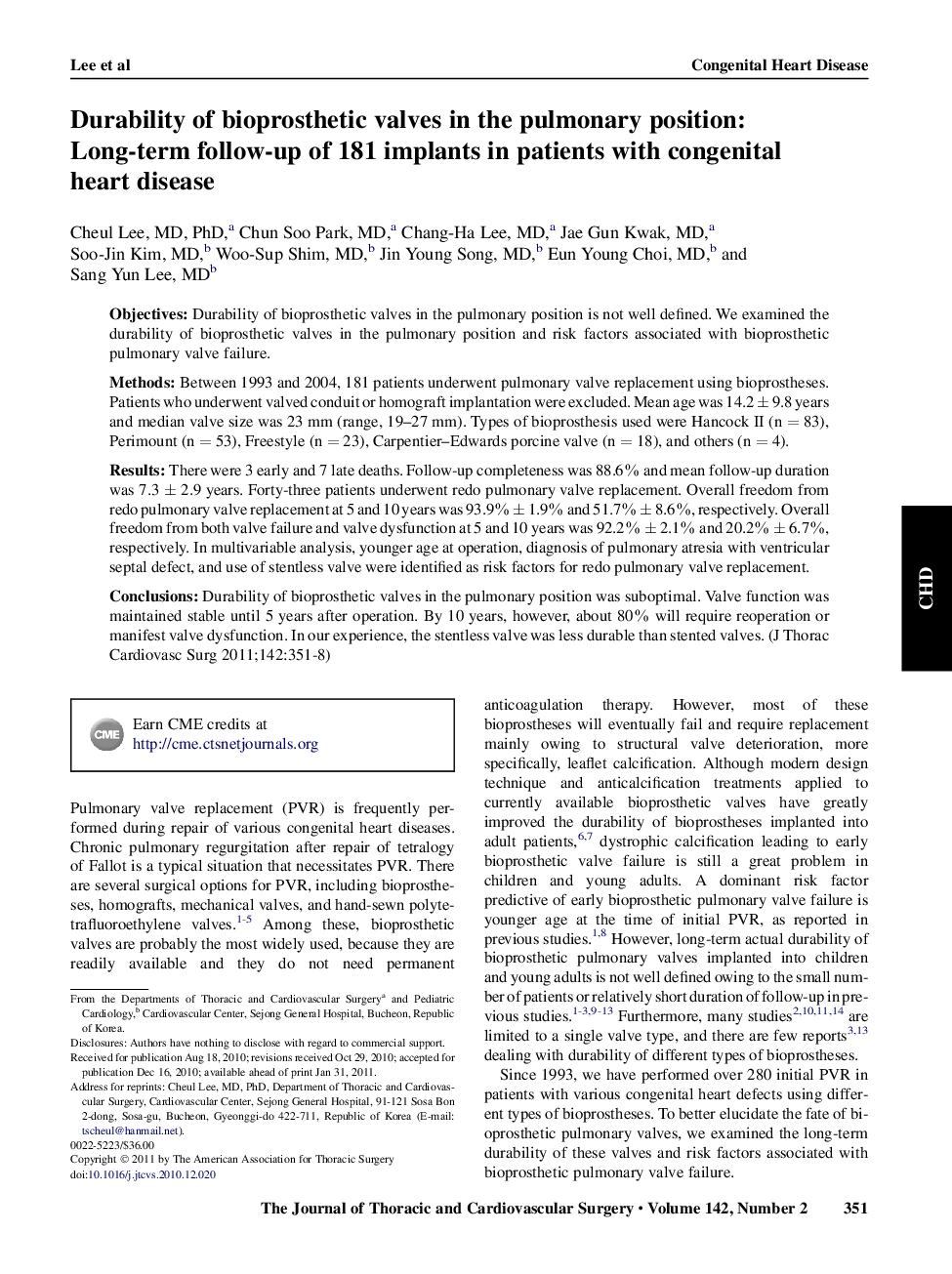| Article ID | Journal | Published Year | Pages | File Type |
|---|---|---|---|---|
| 2982586 | The Journal of Thoracic and Cardiovascular Surgery | 2011 | 8 Pages |
ObjectivesDurability of bioprosthetic valves in the pulmonary position is not well defined. We examined the durability of bioprosthetic valves in the pulmonary position and risk factors associated with bioprosthetic pulmonary valve failure.MethodsBetween 1993 and 2004, 181 patients underwent pulmonary valve replacement using bioprostheses. Patients who underwent valved conduit or homograft implantation were excluded. Mean age was 14.2 ± 9.8 years and median valve size was 23 mm (range, 19–27 mm). Types of bioprosthesis used were Hancock II (n = 83), Perimount (n = 53), Freestyle (n = 23), Carpentier–Edwards porcine valve (n = 18), and others (n = 4).ResultsThere were 3 early and 7 late deaths. Follow-up completeness was 88.6% and mean follow-up duration was 7.3 ± 2.9 years. Forty-three patients underwent redo pulmonary valve replacement. Overall freedom from redo pulmonary valve replacement at 5 and 10 years was 93.9% ± 1.9% and 51.7% ± 8.6%, respectively. Overall freedom from both valve failure and valve dysfunction at 5 and 10 years was 92.2% ± 2.1% and 20.2% ± 6.7%, respectively. In multivariable analysis, younger age at operation, diagnosis of pulmonary atresia with ventricular septal defect, and use of stentless valve were identified as risk factors for redo pulmonary valve replacement.ConclusionsDurability of bioprosthetic valves in the pulmonary position was suboptimal. Valve function was maintained stable until 5 years after operation. By 10 years, however, about 80% will require reoperation or manifest valve dysfunction. In our experience, the stentless valve was less durable than stented valves.
